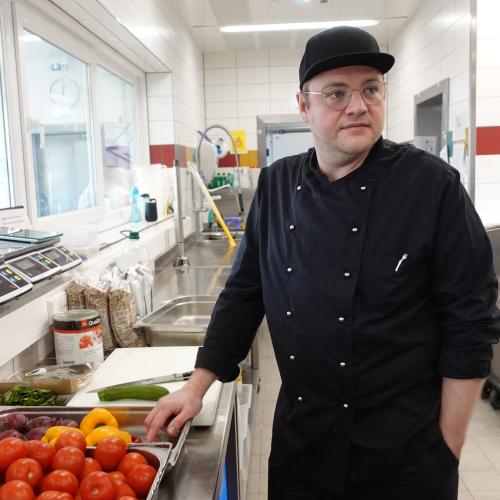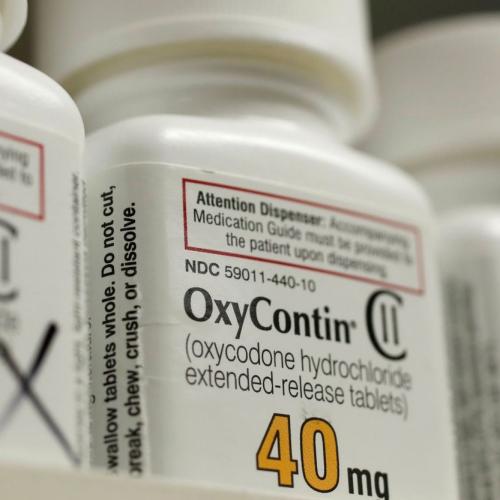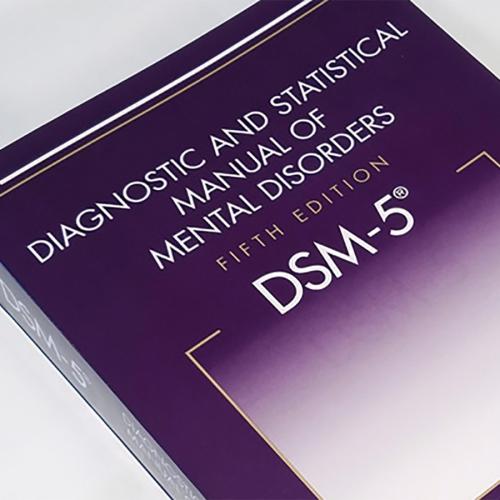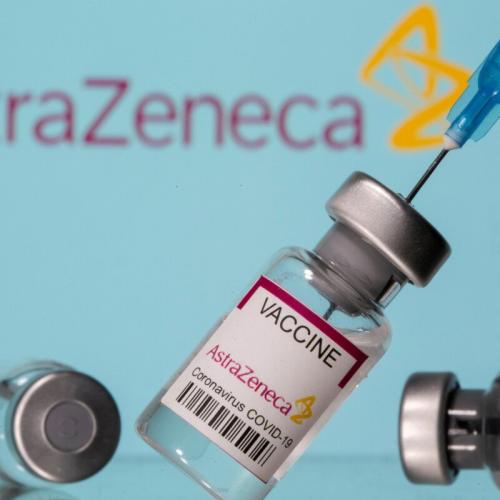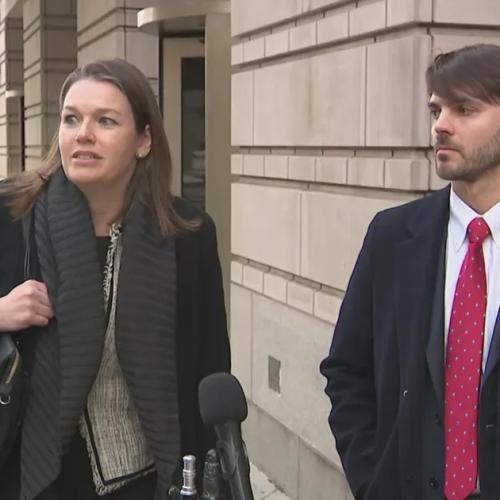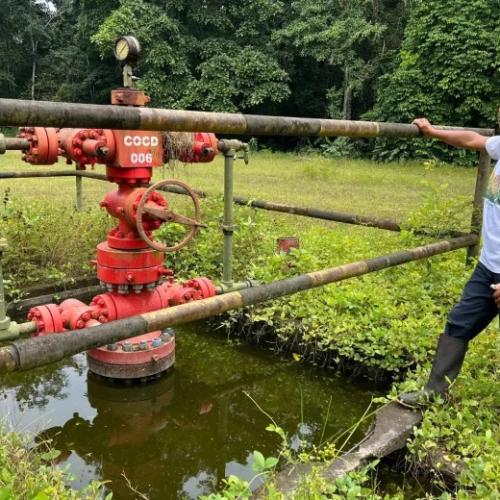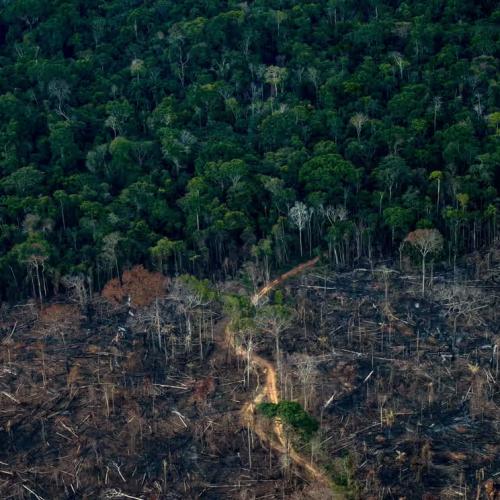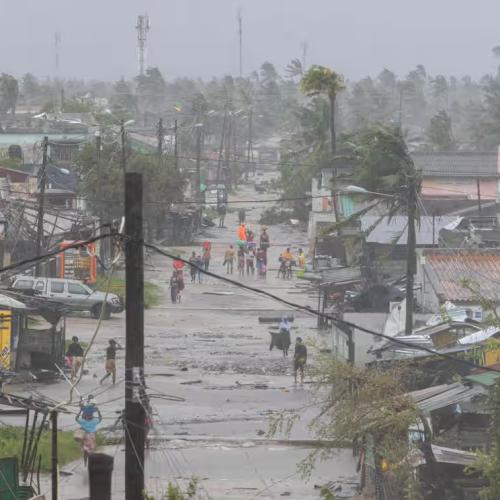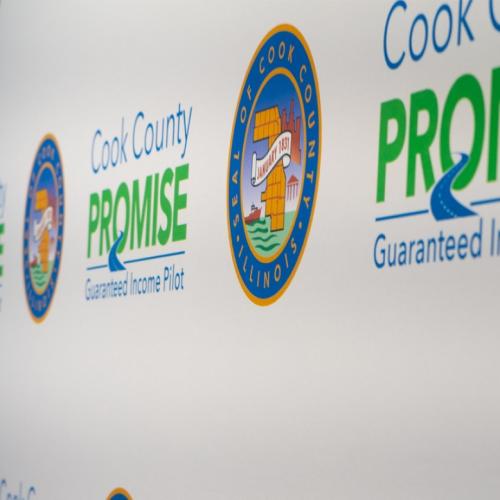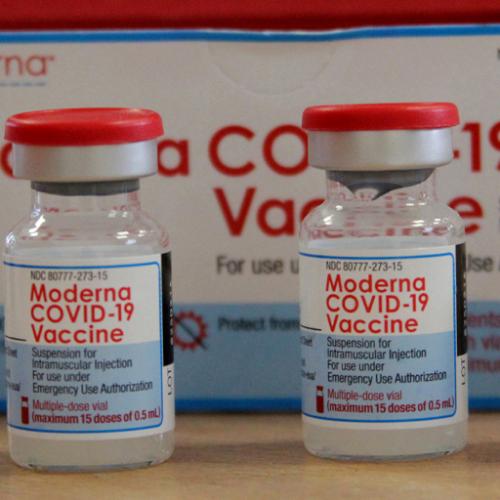Toxic Chemicals News Stories
Below are key excerpts of revealing news articles on the toxic chemicals that we're exposed to in our food, household products, environment, and more. If any link fails to function, a paywall blocks full access, or the article is no longer available, try these digital tools.
For further exploration, delve into our comprehensive Health and Food Corruption Information Center.
Seventeen major food manufacturers earned an average grade of F for their lack of progress in reducing pesticides in the products they sell, according to a new analysis by As You Sow, a nonprofit specializing in shareholder advocacy. “It’s disheartening to see so many bad grades across the board for these major food production companies,” said Jane Houlihan, research director for Healthy Babies, Bright Futures. “Studies find the highest amounts of pesticides in some of the most popular foods children eat — berries and apples, for example,” said Houlihan. “Pesticides are also found in breast milk and umbilical cord blood, meaning that exposures start before birth and continue through infancy and beyond.” Long-term exposure to pesticides has been linked to cancer, asthma, anxiety, Parkinson’s disease, depression, and attention deficit and hyperactivity disorder, according to the report. Kale, collard and mustard greens contained the largest number of pesticides — 103 types — while nearly 90% of blueberry and green bean samples had concerning findings, according to the analysis. Green bean samples contained extremely high levels of acephate, an insecticide banned for use in the vegetable in 2011. Blueberry samples contained acephate, phosmet and malathion — organophosphates which interfere with the normal function of the nervous system. What can consumers do? Choosing organic foods is a surefire way to reduce pesticide exposure.
Note: Read the complete study, titled, "Pesticides in the Pantry: Transparency & Risk in Food Supply Chains." A groundbreaking study found that eating a completely organic diet (even just for a week) can dramatically reduce the presence of pesticide levels in our bodies. For more along these lines, see concise summaries of deeply revealing news articles on food system corruption from reliable major media sources.
Forever chemicals, also known as per- and polyfluoroalkyl substances (PFAS), are a pervasive group of compounds that have been linked to a number of cancers and other illnesses. The toxic substances have become widespread in the air, soil and water via industrial discharge and are found in a number of common household items, from cookware to dental floss to stain-resistant furniture. And many of the products in which they have been detected — including waterproof makeup, workout leggings and period products — are primarily marketed toward women. In May 2022, a team of researchers at the Massachusetts-based Silent Spring Institute published a study ... looking at the presence of PFAS in underwear and several other consumer items. Among those products was menstrual underwear. Research released in August ... also found indicators of PFAS in some period products, including wrappers for several pads and some tampons and outer layers of menstrual underwear. A 2021 study ... tested 231 makeup products and found that 63 percent of the foundations, 58 percent of the eye products, 55 percent of the lip products and 47 percent of the mascaras it looked at contained high levels of fluorine. The Environmental Working Group has identified 300 cosmetic products from 50 different popular brands that contain PFAS in its Skin Deep database. The advocacy organization found that 200 of these products contain PTFE, which is also used in Teflon pans.
Note: For more along these lines, see concise summaries of deeply revealing news articles on health and corporate corruption from reliable major media sources.
A federal appeals court in the US has killed a ban on plastic containers contaminated with highly toxic PFAS “forever chemicals” found to leach at alarming levels into food, cosmetics, household cleaners, pesticides and other products across the economy. Houston-based Inhance manufactures an estimated 200m containers annually with a process that creates, among other chemicals, PFOA, a toxic PFAS compound. The Environmental Protection Agency (EPA) in December prohibited Inhance from using the manufacturing process. But the conservative fifth circuit court of appeals court overturned the ban. The judges did not deny the containers’ health risks, but said the EPA could not regulate the buckets under the statute it used. The rule requires companies to alert the EPA if a new industrial process creates hazardous chemicals. Inhance has produced the containers for decades and argued that its process is not new, so it is not subject to the regulations. The EPA argued that it only became aware that Inhance’s process created PFOA in 2020, so it could be regulated as a new use, but the court disagreed. PFAS are a class of about 15,000 compounds [that] have been linked to cancer, high cholesterol, liver disease, kidney disease, fetal complications and other serious health problems. A peer-reviewed study in 2011 found Inhance’s containers leached the toxic compounds into their contents.
Note: For more along these lines, see concise summaries of deeply revealing news articles on health and corporate corruption from reliable major media sources.
The Environmental Protection Agency must ban the toxic weedkiller paraquat – a step more than 60 other countries have taken because of its threats to human health. Paraquat has been linked to Parkinson’s disease, non-Hodgkin lymphoma, childhood leukemia and more. While the EPA says paraquat is too toxic for use on U.S. golf courses, it still allows use of the herbicide on farms. This threatens the health of the people who apply it, other farmworkers and those who live or work near crop fields where it’s used. More than 10 million pounds of paraquat were sprayed in 2018 alone, twice as much as has been sprayed since 2014. While much of the paraquat applied winds up in the soil for years, the chemical can also drift through the air or linger in dust. Syngenta makes paraquat in China and the United Kingdom. The Swiss-based company, which was acquired by a Chinese state-owned chemical conglomerate, has long understood the chemical’s health risks. But it spent decades hiding this knowledge from the public and the EPA. Ironically, Chinese, U.K. and Swiss farmers are prohibited by their respective governments from using paraquat due to potential health risks from exposure. But the weedkiller isn’t prohibited in the U.S. Ingesting even tiny amounts of paraquat can be lethal. Recently, findings from researchers at UCLA show paraquat sprayed within 500 meters ... of where people lived and worked could more than double a person’s odds of developing Parkinson’s.
Note: Read more about the dangers of paraquat. For more along these lines, see concise summaries of deeply revealing news articles on health from reliable major media sources.
A chemical found in water bottles has been linked to child obesity, according to a new study. The synthetic chemical Bisphenol A, or BPA, was found in a variety of widely used products, such as plastic water bottles and eyewear. But it is also a chemical known to disrupt the body's hormones. The chemical, which can make its way into other avenues, such as food and the soil, accumulates in the body's tissues and organs when ingested. It is known to affect weight and can affect certain cells. A new study published in mSystems found that this chemical could be playing a role in causing different bacteria groups in children of normal weight than those who were overweight. "We found that the gut microbial community responds differently to BPA exposure depending on the BMI (body-mass index) of the individual," [said] microbiologist Margarita Aguilera of the University of Granada. "[Those connections] underscore the intricate interplay between gut microbiota and potential human pathophysiology resulting from cumulative BPA exposure." Researchers ... found overall that there were more unique bacteria groups in the children of a normal weight. This strongly suggests that the bacteria in those children may be able to fight off harmful chemicals like BPA. This study, and future studies into the effects of BPA, "could point to future interventions and policy changes that may reduce the risk of childhood obesity worldwide," Aguilera said.
Note: For more along these lines, see concise summaries of deeply revealing news articles on health and corporate corruption from reliable major media sources.
High levels of a chemical known to cause cancer have been found at "unacceptably high levels" in popular acne products from brands like Proactive, Target's Up & Up, Clinique, and Clearasil, according to a recent report by independent laboratory Valisure. Benzene, a known human carcinogen, was found to develop in products with benzoyl peroxide, a chemical used to treat acne, at a level of over 800 times the concentration limit of 2 parts per million set by the U.S. Food and Drug Administration, the March 6 report said. The drug product was found to be "fundamentally unstable" especially when stored at high temperatures. The report found a Proactiv product left in 158 degrees Fahrenheit of a hot compact car resulted in the detection of benzene at around 1,270 times the Environmental Protection Agency’s calculated threshold for increased cancer risk. "There is not a safe level of benzene that can exist in any skin care product, over the counter or prescription," Christopher Bunick, MD, PhD, Associate Professor of Dermatology at Yale University, said in a statement for Valisure. The report also found that benzene can leak out of packaging and "pose a potential inhalation risk" to consumers, according to the report. The company sent a citizen petition to the FDA on Tuesday describing its report and requesting "recalls and a suspension of sales for products containing the active pharmaceutical ingredient benzoyl peroxide."
Note: For more along these lines, see concise summaries of deeply revealing news articles on health and corporate corruption from reliable major media sources.
Plastic producers have known for more than 30 years that recycling is not an economically or technically feasible plastic waste management solution. That has not stopped them from promoting it, according to a new report. “The companies lied,” said Richard Wiles, president of fossil-fuel accountability advocacy group the Center for Climate Integrity (CCI), which published the report. “It’s time to hold them accountable for the damage they’ve caused.” Plastic, which is made from oil and gas, is notoriously difficult to recycle. Doing so requires meticulous sorting, since most of the thousands of chemically distinct varieties of plastic cannot be recycled together. That renders an already pricey process even more expensive. Another challenge: the material degrades each time it is reused, meaning it can generally only be reused once or twice. The industry has known for decades about these existential challenges, but obscured that information in its marketing campaigns. The report does not allege that the companies broke specific laws. But Alyssa Johl, report co-author and attorney, said she suspects they violated public-nuisance, racketeering and consumer-fraud protections. The industry’s misconduct continues today. Over the past several years, industry lobbying groups have promoted so-called chemical recycling, which breaks plastic polymers down into tiny molecules. But the process creates pollution and is even more energy intensive than traditional plastic recycling.
Note: For more along these lines, see concise summaries of deeply revealing news articles on corporate corruption from reliable major media sources.
A US court this week banned three weedkillers widely used in American agriculture, finding that the Environmental Protection Agency (EPA) broke the law in allowing them to be on the market. The ruling is specific to three dicamba-based weedkillers manufactured by Bayer, BASF and Syngenta, which have been blamed for millions of acres of crop damage and harm to endangered species and natural areas across the midwest and south. Discovery documents turned up in the litigation showed the companies knew that their dicamba weedkillers would probably lead to off-target crop damage. This is the second time a federal court has banned these weedkillers since they were introduced for the 2017 growing season. In 2020, the ninth circuit court of appeals issued its own ban, but months later the Trump administration reapproved the weedkilling products. But a federal judge in Arizona ruled on Monday that the EPA made a crucial error in reapproving dicamba, finding the agency did not post it for public notice and comment as required by law. US district judge David Bury wrote ... that it was a “very serious” violation and that if EPA had done a full analysis, it probably would not have made the same decision. Bury wrote that the EPA did not allow many people who are deeply affected by the weedkiller – including specialty farmers, conservation groups and more – to comment. “The evidence has shown that dicamba cannot be used without causing massive and unprecedented harm to farms as well as endangering plants and pollinators,” said George Kimbrell [with] the Center for Food Safety, which litigated the case.
Note: For more along these lines, see concise summaries of deeply revealing news articles on health and government corruption from reliable major media sources.
A new EWG peer-reviewed study has found chlormequat, a little-known pesticide, in four out of five, or 80 percent, of people tested. The groundbreaking analysis of chlormequat in the bodies of people in the U.S. rings alarm bells, because the chemical is linked to reproductive and developmental problems in animal studies, suggesting the potential for similar harm to humans. EWG’s research, published February 15 in the Journal of Exposure Science and Environmental Epidemiology, tested for the presence of chlormequat in urine collected from 96 people between 2017 and 2023. The chemical was found in the urine of 77 of them. We detected the chemical in 92 percent of oat-based foods purchased in May 2023, including Quaker Oats and Cheerios. The fact that so many people are exposed raises concerns about its potential impact on public health, since animal studies link chlormequat to reduced fertility, harm to the reproductive system and altered fetal growth. Environmental Protection Agency regulations allow the chemical to be used on ornamental plants only – not food crops – grown in the U.S. But its use is permitted on imported oats and other foods sold here. Many oats and oat products consumed in the U.S. come from Canada. Chlormequat was not allowed on oats sold in the U.S. before 2018, when the Trump EPA gave first-time approval for some amount of the chemical on imported oats. The same administration in 2020 increased the allowable level.
Note: For more along these lines, see concise summaries of deeply revealing news articles on health and food system corruption from reliable major media sources.
Researchers have discovered bottled water sold in stores can contain 10 to 100 times more bits of plastic than previously estimated — nanoparticles so infinitesimally tiny they cannot be seen under a microscope. At 1,000th the average width of a human hair, nanoplastics are so teeny they can migrate through the tissues of the digestive tract or lungs into the bloodstream, distributing potentially harmful synthetic chemicals throughout the body and into cells. One liter of water — the equivalent of two standard-size bottled waters — contained an average of 240,000 plastic particles from seven types of plastics, of which 90% were identified as nanoplastics and the rest were microplastics. Microplastics are polymer fragments that can range from less than 0.2 inch (5 millimeters) down to 1/25,000th of an inch (1 micrometer). Anything smaller is a nanoplastic that must be measured in billionths of a meter. The new finding reinforces long-held expert advice to drink tap water from glass or stainless steel containers to reduce exposure. In the new study, published ... in the journal Proceedings of the National Academy of Sciences, researchers from Columbia University presented a new technology that can see, count and analyze the chemical structure of nanoparticles in bottled water. Nanoplastics ... can invade individual cells and tissues in major organs, potentially interrupting cellular processes and depositing endocrine-disrupting chemicals.
Note: For more along these lines, see concise summaries of deeply revealing news articles on health from reliable major media sources.
By contributing to the development of chronic disease and death, a group of hormone-disruptive plastic chemicals is costing the US health care system billions — over $249 billion in 2018 alone, a new study found. The new research analyzed the impact of four groups of chemicals used in the production of plastic products: Flame retardants called polybrominated diphenyl ethers, or PBDE; phthalates, which are used to make plastic more durable; bisphenols such as BPA and BPS used to create hard plastics and resins; and per- and polyfluoroalkyl substances, also known as PFAS. However, these are just a fraction of the chemicals used to make plastics. A United Nations report published in May found more than 13,000 chemicals are used in plastics production. The four chemicals measured in the new study ... are thought to interfere with the body’s mechanism for hormone production, known as the endocrine system, and cause damage to developmental, reproductive, immune and cognitive systems. “The biggest impact of endocrine-disrupting chemicals is on children’s brain development because they disrupt thyroid hormones in pregnancy,” [lead author Dr. Leonardo] Trasande said. The report recommended blood tests for people at high risk such as firefighters, workers in fluorochemical manufacturing plants, and those who live near commercial airports, military bases, landfills, incinerators, wastewater treatment plants and farms.
Note: For more along these lines, see concise summaries of deeply revealing news articles on health and corporate corruption from reliable major media sources.
Common consumer products may contain hundreds of chemicals that could increase our risk of developing breast cancer, scientists have warned. While some chemicals are known to directly cause cancer, many others indirectly promote the cancer by increasing our susceptibility to the establishment and growth of certain tumors. Breast cancer occurs when cells in the breast tissue grow out of control. Among the many risk factors associated with this disease is over-exposure to estrogen, progesterone and hormonal disruption. And it's not just hormonal contraception that can influence our body's hormone levels; numerous synthetic chemicals have been shown to disrupt our hormones, with potential impacts on our risk of developing various diseases. "Breast cancer is a hormonal disease, so the fact that so many chemicals can alter estrogen and progesterone is concerning," Jennifer Kay, a research scientist at Silent Spring Institute, said. In a new study, published in the journal Environmental Health Perspectives, Kay and colleagues searched through multiple international and U.S. government databases to identify chemicals that had been found to cause mammary tumors in animals. In total, the team identified 921 chemicals that could potentially promote the development of breast cancer, 90 percent—or 829—of which are commonly included in consumer products, food, drinks, pesticides, medications and workplaces.
Note: For more along these lines, see concise summaries of deeply revealing news articles on health and corporate corruption from reliable major media sources.
Nearly 40% of conventional baby food products analyzed in a new US study were found to contain toxic pesticides, while none of the organic products sampled in the survey contained the chemicals. The research, conducted by the Environmental Working Group (EWG) non-profit, looked at 73 products and found at least one pesticide in 22 of them. Many products showed more than one pesticide, and the substances present a dangerous health threat. “Babies and young children are particularly vulnerable to the health risks posed by pesticides in food,” said Sydney Evans, a senior science analyst at EWG. The study looked at products from Beech-Nut, Gerber and Parent’s Choice, though it did not specifically identify which of the companies’ products contained pesticide residue. Among pesticides it detected were acetamiprid, a neonicotinoid insecticide that harms bees and humans, and captan, which is linked to cancer. Fludioxonil, a product commonly used on fruits, vegetables and cereals, was found in five products and is thought to harm fetal development, cause changes in immune system cells and disrupt hormones. Apple-based products were the most likely to contain high levels of pesticide residue, and blueberries, pears and strawberries are also among produce that commonly hold high levels of the chemicals. The best way to avoid pesticides is to buy organic baby food products, which are subjected to much stricter regulations.
Note: For more along these lines, see concise summaries of deeply revealing news articles on health and food system corruption from reliable major media sources.
The Department of Defense relies on hundreds, if not thousands, of weapons and products such as uniforms, batteries, and microelectronics that contain PFAS, a family of chemicals linked to serious health conditions. Now, as regulators propose restrictions on their use or manufacturing, Pentagon officials have told Congress that eliminating the chemicals would undermine military readiness. PFAS, known as “forever chemicals” because they don’t break down in the environment and can build up in the human body, have been associated with such health problems as cancer. In July, a new federal study showed a direct link between testicular cancer and PFOS, a PFAS chemical that has been found in the blood of thousands of military personnel. In a report delivered to Congress in August, Defense Department officials pushed back against health concerns raised by environmental groups and regulators. According to the report, most major weapons systems, their components, microelectronic chips, lithium-ion batteries, and other products contain PFAS chemicals. These include helicopters, airplanes, submarines, missiles, torpedoes, tanks, and assault vehicles; munitions; semiconductors and microelectronics; and metalworking, cooling, and fire suppression systems. Beyond cancer, some types of PFAS have been linked to low birth weight, developmental delays in children, thyroid dysfunction, and reduced response to immunizations.
Note: If the above link fails, you can read the article here. PFAS are linked to serious health conditions: cancer, liver damage, hormonal disruption, reproductive issues, reduced sperm count, reduced immune response, and more. PFAS have also been found in 45% of US tap water. Read more on how war is hazardous to our health and environment in our Military-Intelligence Corruption Information Center.
Pesticides used in our homes, gardens and lawns and sprayed on foods we eat are contributing to a dramatic decline in sperm count among men worldwide, according to a new analysis of studies over the last 50 years. “Over the course of 50 years, sperm concentration has fallen about 50% around the world,” said senior study author Melissa Perry. “While there are likely many more contributing causes, our study demonstrates a strong association between two common insecticides —organophosphates and N-methyl carbamates — and the decline of sperm concentration.” Organophosphates are the main components of nerve gas, herbicides, pesticides and insecticides and are also used to create plastics and solvents. They are widely used in agriculture on the crops we eat. We use them in structural applications within homes and buildings. N-methyl carbamates are structurally and operationally similar to organophosphates, killing insects by damaging their brains and nervous systems. The study, published ... in the journal Environmental Health Perspectives, examined 25 studies around the world on the two chemicals. Those studies looked at 42 different levels of impact among 1,774 men in 21 different study populations. Men who were more highly exposed to the pesticides, such as those who work in agriculture, had significantly less sperm concentration than men who had the least exposure to organophosphates and N-methyl carbamates, the study found.
Note: For more along these lines, see concise summaries of deeply revealing news articles on health and food system corruption from reliable major media sources.
A federal appeals court on Thursday is tossing the Environmental Protection Agency’s (EPA) ban on a pesticide that has been linked to brain damage in children. The decision from the 8th Circuit Court of Appeals to send the rule back to the agency does not preclude the agency from reinstating the ban in the future. But it said the EPA needs to give greater consideration to whether there are cases where the pesticide, called chlorpyrifos, could be used safely. Chlorpyrifos has been used as an insecticide, protecting crops like soybeans, broccoli, cauliflower and fruit trees. The EPA banned chlorpyrifos for use in growing food in 2021. That came after a prior court ruling gave the agency just 60 days to either find a safe use for chlorpyrifos or ban it outright. The appeals court determined that this deadline contributed to a rushed decision from EPA that was ultimately “arbitrary and capricious.” The ruling comes from Judges Lavenski Smith, Raymond Gruender and David Stras, two of whom were appointed by former President George W. Bush and one of whom was appointed by former President Trump. The chlorpyrifos issue has ping-ponged between administrations. The Obama administration had proposed to ban its use on food, but the Trump administration reversed course and had proposed to allow some uses of the chemical.
Note: Did you know that chlorpyrifos was originally developed by Nazis during World War II for use as a nerve gas? Read more about the history and politics of chlorpyrifos, and how U.S. regulators relied on falsified data to allow its use for years. See other concise news articles we've summarized about the harms of chlorpyrifos.
There’s a hidden ingredient used as a whitener in an array of foods. It’s called titanium dioxide, and while commonly used in the US, it’s being banned in the EU as a possible carcinogen. The additive, also known as E171, joins a host of other chemicals that are banned in foods in the European Union but allowed in the US. These include Azodicarbonamide, a whitening agent found in food such as breads, bagels, pizza, and pastries in the US, which has been banned in the EU for more than a decade. The additive has been linked to asthma and respiratory issues in exposed workers and, when baked, to cancer in mice studies. The Food and Drug Administration classifies these food chemicals, and many others prohibited by the EU, as “generally recognized as safe”. Chemical safety processes in the EU and US work in starkly different ways. Where European policy tends to take a precautionary approach – trying to prevent harm before it happens – the US is usually more reactive. And while the EU has consistently updated its methods and processes for evaluating new chemicals, some experts say the US system, set up more than half a century ago, needs updating. In the case of additives like titanium dioxide, manufacturers petition the FDA for its approval by submitting evidence that the substance is safe for its intended use. The FDA evaluates the application, and will authorize the additive if it concludes the data provided demonstrates that the substance is safe to use.
Note: Unlike other countries, the U.S. is known to raise objections to the regulation of toxic chemicals in our food, with its regulatory agencies having deep financial ties to powerful food and agrichemical industries. For more along these lines, see concise summaries of deeply revealing news articles on food system corruption from reliable major media sources.
For decades, it was the secret behind the magic show of homemaking across the US. Applied to a pan, it could keep a fried egg from sticking to the surface. Perfluorooctanoic acid, or PFOA, was ... seeping into the blood and organs of hundreds of millions of people who used products containing the chemical. PFOA is just one of dozens of modern-day chemicals that are found in the bodies of the majority of Americans. Research has also shown that more Americans are facing a growing number of ailments and disorders, from autoimmune disease to developmental disorders such as autism and some cancers. Scientists are increasingly concerned these two truths are linked. Scientists have accumulated enough data to conclude with confidence that humans face significant health risks from exposure to common commercial chemicals, and that regulations designed to protect them are failing. Due to flaws in federal regulation, the US Environmental Protection Agency (EPA) is perennially playing catch up. The majority of the 86,000 consumer chemicals registered with the agency have never received vigorous toxicity testing. Kyla Bennett, a former EPA employee [said] that at recent rates of review, it would take thousands of years to assess all 86,000 chemicals currently approved for use. EPA staff ... say the agency’s chemical programs remain understaffed, overwhelmed and burdened by still-ineffective regulations and a persistent culture that enables the chemical industry instead of counterbalancing it.
Note: For more along these lines, see concise summaries of deeply revealing news articles on government corruption and health issues from reliable major media sources.
In 1953, a paper developed for cigarette maker RJ Reynolds detailed possible cancer-causing agents in tobacco, but the document would remain hidden from public view for decades. In the interim, the industry told the public: “We don’t accept the idea that there are harmful agents in tobacco.” The chemical industry, it seemed, took note. Just a few years later, DuPont scientists found PFAS enlarged lab rats’ livers and likely caused birth defects in workers. Still, the company told its employees the cancer-linked compounds are “about as toxic as table salt”. Like the tobacco industry before it, the chemical industry managed to keep PFAS’s health risks hidden from the public for decades. A new peer-reviewed study dissecting PFAS producers’ public relations strategies provides a smoking gun timeline composed of industry studies and comments from DuPont and 3M officials showing they knew the dangers, but publicly insisted the chemicals were safe. Between 1961 and 2006, the authors identified dozens of instances where DuPont or 3M scientists discovered or acknowledged PFAS toxicity internally, but did not publish the findings or report them to the EPA, as required under federal law. DuPont’s chief toxicologist in 1961 found rats’ livers enlarged at very low doses of exposure, a health impact recognized as “the most sensitive sign of toxicity.” The report recommended PFAS be handled “with extreme care” and that “contact with the skin should be strictly avoided.”
Note: These chemicals have contaminated 41 percent of US tap water. For more along these lines, see concise summaries of deeply revealing news articles on corruption in science and in the corporate world from reliable major media sources.
A new peer-reviewed study released by a group of scientists in Taiwan has revealed an astonishingly strong link between severe depression, cognitive decline and exposure to the world’s most used herbicide, glyphosate. The study was fully published on Aug. 22 in the highly respected Elsevier Journal, Environmental Research. It was met with silence by the manufacturers of glyphosate-based herbicides such as Bayer/Monsanto, who produce the infamous weedkiller Roundup. The study authors stated that they: “Conducted analyses on existing data collected from 1532 adults of the 2013–2014 U.S. National Health and Nutrition Examination Survey (NHANES) to explore the possible relationship between glyphosate exposure and cognitive function, depressive symptoms, disability, and neurological medical conditions.” The proportion of individuals with detectable levels of glyphosate was 80.4%. The scientists concluded: “Our study provides important evidence of an association between urinary glyphosate levels and adverse neurological outcomes in a representative cohort of U.S. adult population. “Specifically, we observed lower cognitive function scores, greater odds of severe depressive symptoms, and increased risk of serious hearing difficulty in individuals with higher glyphosate exposure.” Some other recent independent studies ... suggest that both glyphosate alone and glyphosate-based herbicides such as Roundup are neurotoxins.
Note: A 2019 study found that glyphosate increases cancer risk by 41%. For more along these lines, see concise summaries of deeply revealing news articles on food system corruption and health from reliable major media sources.
Important Note: Explore our full index to revealing excerpts of key major media news stories on several dozen engaging topics. And don't miss amazing excerpts from 20 of the most revealing news articles ever published.








